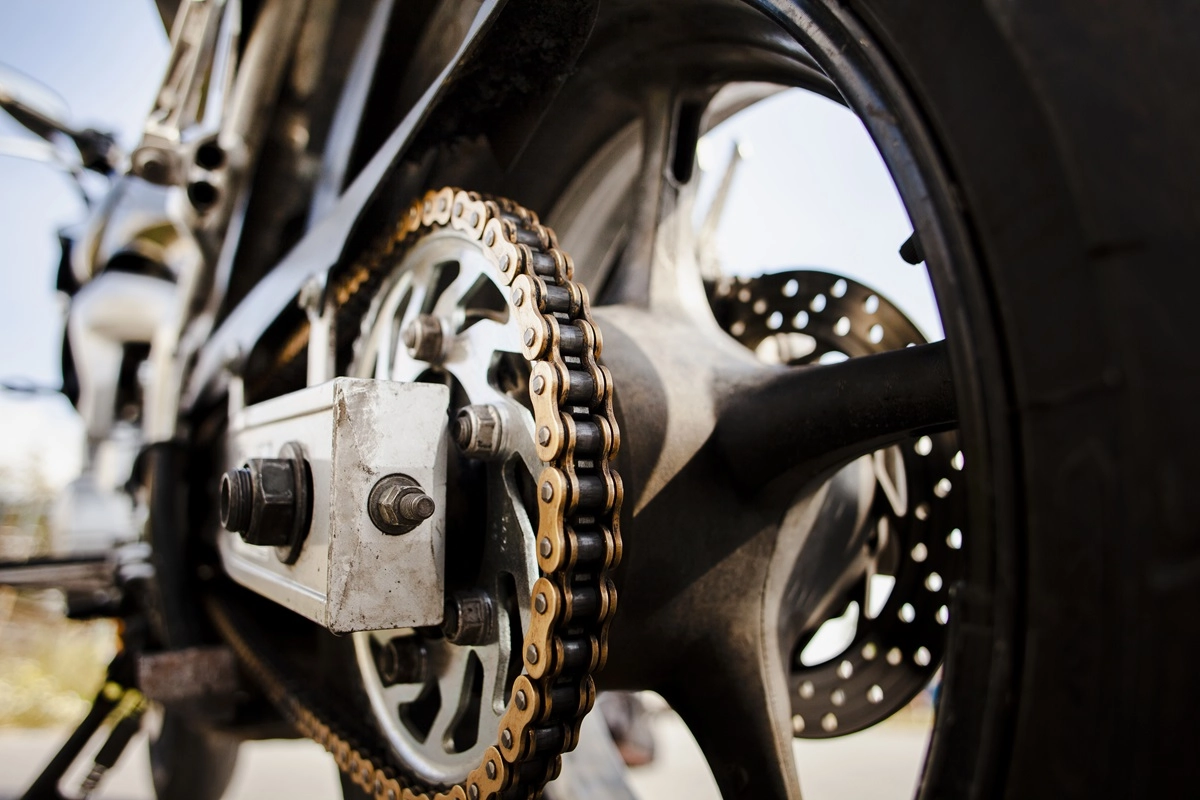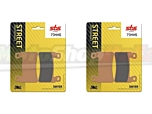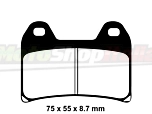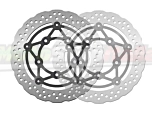In this article, we will talk about motorcycle safety, a fundamental aspect that every two-wheel enthusiast must follow. One of the most crucial components in this context are the brakes. Yes, those devices that, in an instant, can make the difference between smooth driving and a less pleasant, or even dangerous, experience. In a motorcyclist's life, understanding the importance of brakes is as vital as knowing how to drive.
But what makes brakes so essential? The primary role of motorcycle brakes? To control speed and ensure the rider's safety. Every time you squeeze the brake lever or press the pedal, you are activating a sophisticated system that slows down the motorcycle. It's not just about reducing speed, but also having complete control of the motorcycle, especially in critical conditions like:
- during rain,
- on slippery roads,
- in emergency situations.
To do this, brakes convert the motorcycle's kinetic energy into heat through friction. This process mainly occurs in the motorcycle's brake discs, which are among the components to consider carefully when talking about safety. Choosing brake discs is not to be taken lightly: materials, sizes, and design all have a significant impact on braking performance.
Brakes: Not Just a Safety Mechanism
Brakes are also a key element for performance on track and road. More effective brakes allow you to enter a curve with more precision, better handle the motorcycle in heavy traffic, and enjoy riding with greater confidence. For professional motorcyclists, brakes are indispensable tools for cutting lap times and performing advanced maneuvers like controlled wheelies.
In this article, we'll discover how motorcycle brakes work, seeing how each component contributes to the overall driving experience. From brake fluid to ABS systems, every detail counts. Whether you're enthusiasts who love Sunday rides or riders looking to improve their track performance, a deep understanding of brakes is essential.
Considering buying motorcycle brake discs or simply wanting to learn more about how they work? You're in the right place. Get ready to explore the world of motorcycle brakes, a world where technology, safety, and passion meet.
Basic Principles of Motorcycle Brakes
At the heart of every motorcycle braking system is indispensable technology: hydraulic brakes. These components are the real protagonists of the braking system. They virtually ensure your safety on two wheels. But how exactly do they work?
Hydraulic brakes use the pressure of a liquid, usually a special oil, to transfer force from the brake control (the lever or pedal) to the brake pads. So, when you press the brake lever, you're actually pushing the fluid through flexible tubes to the pistons located in the brake calipers. These pistons, in turn, push the pads against the brake disc, creating the necessary friction to slow down or stop the motorcycle.
A crucial aspect of this system is the brake pump. This is where your physical force is transformed into hydraulic pressure. There are mainly two types of pumps for motorcycle brakes: axial and radial. The fundamental difference between these two types lies in the orientation of the piston within the pump.
Axial pumps have the piston moving parallel to the handlebar, a traditional configuration found in many motorcycles. They are effective but often require greater force to achieve the same braking pressure as radial pumps.
Radial pumps, on the other hand, have the piston oriented perpendicular to the handlebar. This configuration allows a more direct response and finer control of the braking pressure, requiring less force on the lever. This is why radial pumps are often the preferred choice for sports and high-end motorcycles.
Whether you have a system with an axial or radial pump, the efficiency of the brake depends on the regular maintenance of the hydraulic system. Ensuring that the brake fluid is clean and at adequate levels, as well as checking for leaks in the system, are essential steps to ensure optimal performance.
Components of the Braking System
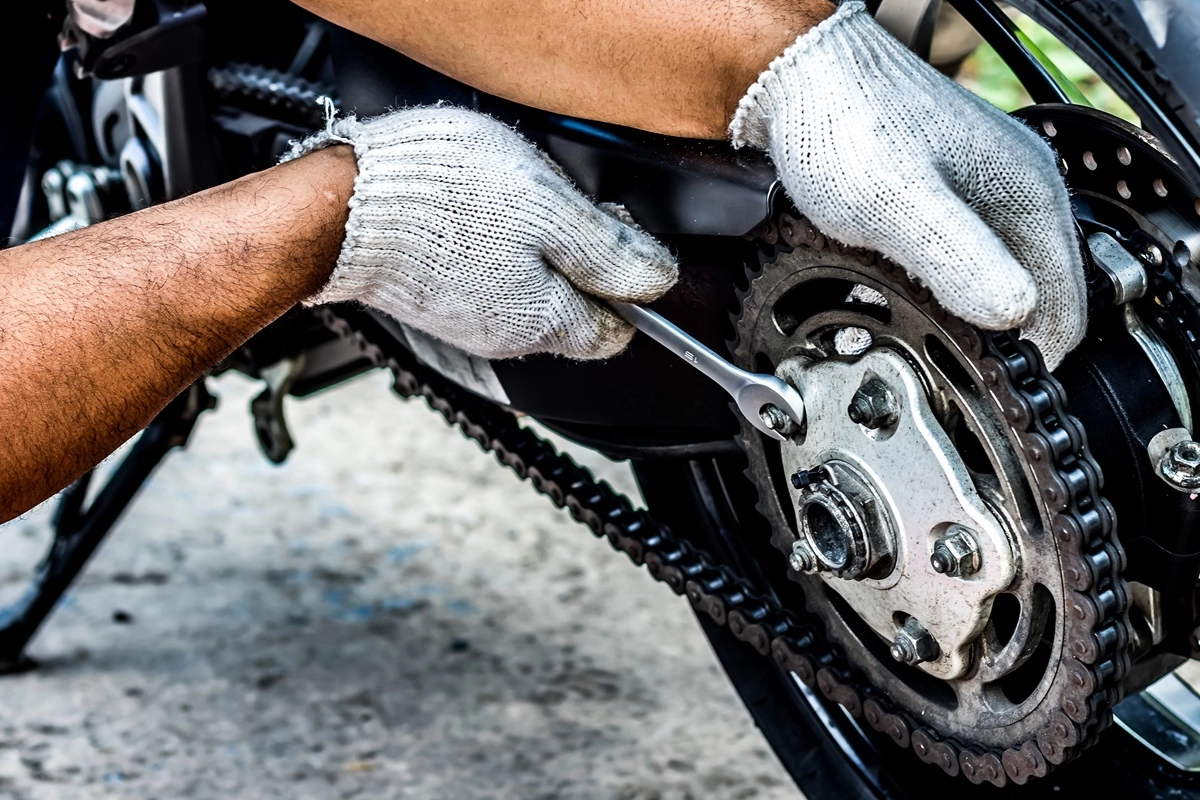
At the heart of a motorcycle's braking system, we find two essential components: brake pads and discs. These pieces work together to slow down and stop the motorcycle, but how exactly do they do it?
Let's start with the brake pads, which are the real main actors in the braking process. When you press the brake lever, the pads are pushed against the brake discs. These pads are made of a material that generates friction, essential for slowing the rotation of the wheel. There are different types of materials for the pads, each with specific performance characteristics, durability, and heat resistance. The right choice of pads can make a big difference in brake response and riding comfort.
Brake discs, on the other hand, are those large metal discs you see through the spokes of the wheel. Their task is to work in tandem with the pads to create the necessary friction for braking. The quality and design of the discs not only affect the effectiveness of braking but also the ability to dissipate the heat generated during the process.
Speaking of heat, let's delve into the dynamics of heat production in brakes. When pads and discs rub against each other, the motorcycle's kinetic energy - the energy of movement - is converted into heat. This heat must be well-managed to avoid overheating that can lead to a loss of efficiency and effectiveness of the brakes, a phenomenon known as "fading." A good braking system is usually created to quickly dissipate this heat, maintaining constant brake performance even under intense use, like on the track or on steep descents.
Heat management is crucial, especially for motorcyclists who love to push the limits. High-quality brake discs, such as daisy or drilled ones, offer a larger cooling surface and are more resistant to fading. Similarly, high-performance pads are designed to withstand high temperatures without losing effectiveness.
Brake Fluid
At the heart of the motorcycle's braking system is a key component: the brake fluid. This fluid has the crucial task of transferring pressure from the brake lever to the pads. When you squeeze the lever, it's the brake fluid that activates the braking mechanism.
Heat Resistance
Its ability to resist heat is important. During intense braking, the system heats up significantly. If the fluid boils, braking becomes less effective, a risk you cannot afford, especially in critical situations like tight corners or steep descents.
Over time, brake fluid can absorb moisture, lowering its boiling point. That's why it's fundamental to change it regularly. Follow your motorcycle manufacturer's guidelines or replace it more frequently if you often ride on the track or have a sporty riding style.
Choosing the Right Brake Fluid
Selecting the right brake fluid is crucial. The most commonly purchased and installed by motorcyclists are: DOT 3, DOT 4, DOT 5, and DOT 5.1. Each has different heat resistance characteristics. For most motorcycles, DOT 4 and DOT 5.1 are recommended for their higher capacity to withstand very high temperatures.
Don't underestimate the choice of quality brake fluid. Ensuring your brakes are reliable means investing in your safety. A well-maintained braking system guarantees control and confidence in every driving condition. In the next paragraphs, we will delve further into the maintenance of the braking system.
Wear and Maintenance of Pads
Let's start with checking the thickness and wear signs of the pads. Periodic checking of pad thickness is a fundamental operation. Most pads have a minimum wear indicator: when this limit is reached, it's time to replace them. But it's not just about thickness. You should also pay attention to any signs of irregular wear or damage, like cracks or chips, which can affect braking effectiveness.
Choosing Pads
The choice of pads depends a lot on the type of motorcycle use. If you're a fan of Sunday rides on quiet roads, you'll need pads with different characteristics compared to a motorcyclist who loves sports performance on the track. For normal road use, organic or semi-metallic material pads offer a good combination of durability and performance. These pads are also quieter and less abrasive on brake discs.
For those who love the track or a sporty riding style, sintered material pads are the ideal choice. They offer excellent braking capacity even at high temperatures, a crucial feature for those who push the limits. However, they tend to be harder on brake discs and can be noisy.
Proper Use of Motorcycle Brakes
The way you use the brakes on your motorcycle is as much an art as it is a science.
For safe and smooth riding, it's essential to know how to best use both the front and rear brakes of the motorcycle. Each brake has its moment: understanding when to use them is the key to perfect motorcycle control.
The Rear Brake
The rear brake, a real ace up your sleeve for stability, especially when going slow or in situations like parking or low-speed curves. This brake acts more gently and helps you maintain the balance of the motorcycle, without surprises. At low speeds, the rear brake reduces the risk of wheel lock, unlike the front brake, which is more powerful but also more 'abrupt' in its reactions.
Using Brakes in Various Situations
In emergency braking or at high speeds, the front brake becomes the protagonist. It gives you most of the braking power, especially because, when braking, the weight of the motorcycle shifts forward. But be careful: it must be dosed carefully, as too much pressure can be counterproductive. Practically, too abrupt pressure can lead to wheel lock or lifting of the rear wheel. The ideal is to apply gradual and constant pressure on the front brake lever.
Every motorcyclist should develop a professional approach to using brakes. This includes being aware of road conditions, traffic, and your own abilities. For example, if you find yourself on wet or slippery roads, you should obviously use the brakes with more caution. Oh, and remember, practicing emergency braking in a controlled environment can help you react better in real situations.
Brake Sensitivity
Another important aspect is brake sensitivity. Learn to feel when the brakes are about to lock and how to modulate the pressure to prevent this from happening. With practice, you'll develop a finer sense of braking, allowing you to react more effectively in all situations.
Conclusion
At the end of this article explaining the workings of motorcycle brakes, we've seen how important each component is for ensuring safe driving. We started by exploring the vital role of hydraulic brakes, then moved on to understanding the details of brake discs and pads, and the fundamental management of brake fluid.
We've also seen how maintenance and careful choice of pads directly influence brake performance. Besides this, we've talked about the importance of knowing the right moment to use the front and rear brake, a skill that makes riding not only safe but also more enjoyable and certainly pleasant.
Every aspect we've explored underlines the importance of brakes for motorcycle safety. A well-maintained and correctly used braking system not only protects you but makes every outing on two wheels an enjoyable and worry-free experience.
And now, an invitation for you: come and discover the spare parts for the braking system in our catalog here at MotoShopItalia. Whether you are looking for replacement pads, new brake discs, or simply quality brake fluid, our catalog has everything you need. At MotoShopItalia, we believe in quality and safety, and that's why we only offer the best products for the most demanding motorcyclists.

 Italiano
Italiano
